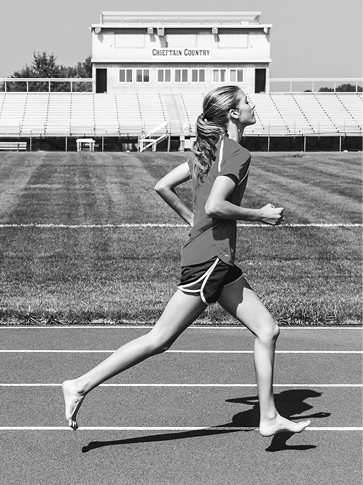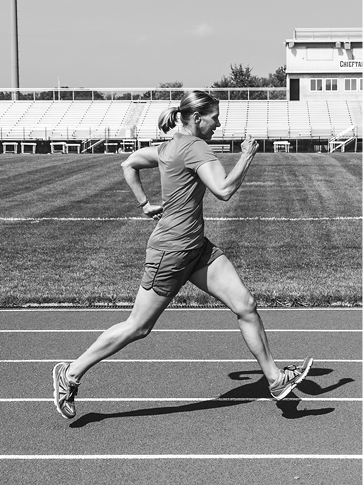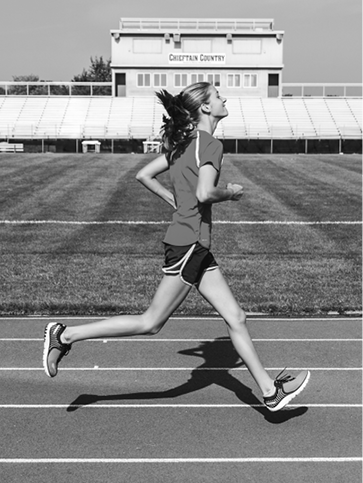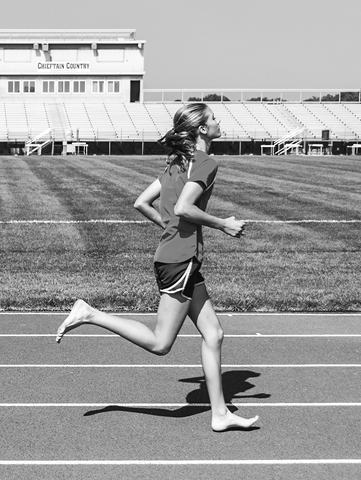Running shoes and form
This is an excerpt from Running Form by Owen Anderson.
When you wake up in the morning and slip into your running shoes in preparation for a run, you have unknowingly changed your running form in a significant way without even taking your first step out the door. That's because research reveals that running shoes have a profound effect on form. Compared with sauntering out the door barefooted or in minimal running shoes, traditional running shoes with elevated, cushioned heels steer you toward the following gait patterns.
Pattern A: Impact Transient
In traditional running shoes, a runner maximizes the “impact transient” (an abrupt collision force acting on the leg during the first 50 milliseconds of stance after the foot hits the ground), compared with barefoot running or running in minimal shoes. The magnitude of the impact transient is three times greater in traditional running shoes, compared with unshod running. In other words, your running shoes, thought to protect you from the impact forces of running, can actually increase the impact forces (1) (figure 12.1).
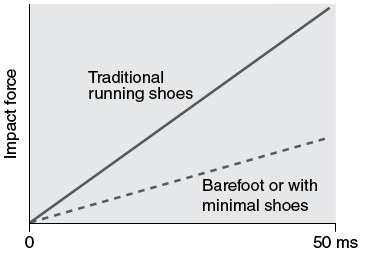
Figure 12.1 Running in conventional shoes is associated with a dramatic impact transient—a powerfully increasing impact force moving up the leg during the first 50 milliseconds of stance.
Pattern B: Heel Strike
In traditional running shoes, the ankle is less plantar-flexed each time the foot hits the ground. This means that a runner is much more likely to make initial contact with the ground with the rear portion of the foot, instead of the front area (in other words, the runner would be running with a rearfoot or heel-strike pattern) (2) (figure 12.2).
| a |
|
b |
|
Figure 12.2 The modern running shoe tends to steer runners away from (a) a more natural unshod landing pattern on the ground, and toward (b) a landing pattern that features a dorsiflexed ankle and a ground strike on the rear portion of the foot.
Pattern C: Knee Angle
In traditional running shoes, the knee is almost always less flexed at ground contact, meaning that the runner is hitting the ground with a significantly straighter leg, compared with running barefooted or in minimal shoes (3). The “knee angle” (the angle made by the posterior portions of the thigh and calf) for almost all runners wearing traditional, heel-elevated shoes is consistently in the range of 166 to 180 degrees at ground contact (4) (figure 12.3a).
By contrast, knee angles for barefooted runners, athletes wearing minimal running shoes with non-elevated heels, and runners who have carried out the running-form drills outlined in this book, fall within the range of 148 to 158 degrees for middle-distance and distance runners and 158 to 166 degrees for sprinters at ground contact (5) (figure 12.3b).
| a |
|
b |
|
Figure 12.3 (a) In traditional shoes, the knee angle is larger at impact with the ground, meaning that the leg is straighter. (b) For the barefoot runner or the runner in minimal shoes, the knee angle is less at the moment of impact, meaning that the knee is less straight (the knee is more flexed).
Landing on the heel with the ankle dorsi-flexed and a straight leg is responsible for the heightened impact transient in thick-heeled, traditional running shoes. If this is difficult to understand, think for a moment of the leg as being an iron pole that strikes the ground at high speed. Contrast that with an elastic appendage that can bend and store energy at its base (the foot), near its bottom (the ankle) and also at its middle (the knee). During the first 50 milliseconds after impact with the ground, which of these two structures would experience the greatest impact force in its top region (the end of the structure farthest from the ground)? It seems obvious that the knee, hip, and thus the spine would take greater, destructive poundings in traditional shoes, compared with running barefooted or the use of minimal shoes.
Impact Forces in Heel-Strikers
When a runner lands on the ground with his heel and a straight (or nearly straight) leg, the force of impact is transmitted extremely rapidly, straight through the heel (which cannot store energy by flexing as the ankle does), straight through the unflexed knee and ramrod-straight leg, and then through the hip to the spine and thus all the way to the head. A pronounced heel-first landing sets off a chain reaction of shock transmission throughout the entire body. This chain of events begins with a sledgehammer-like impact on the posterior aspect of the calcaneus (heel bone) and progresses nearly instantaneously through the leg, hip, and upper body. Research reveals that the sledgehammer landings are not effectively moderated by the high, foamy heels of traditional shoes (in fact, the impact transient can be three times greater in such shoes).
When the heel strikes the ground during a rearfoot-strike, the impact shock force moves upward in the following way:
- From the initial hammer strike on the calcaneus, up through the talus via the subtalar joint (figure 12.4)
- From the talus into the tibia (shin bone) via the tibio-talar joint
- From the tibia directly into the femur (thigh bone) by means of the tibio-femoral joint
- From the femur into the pelvis (hip) via the acetabulo-femoral joint
- From the pelvis into the vertebral column (spine) via the sacroiliac joint
- From the spine into the cranium via the cranio-vertebral joint (figure 12.5)
The calcaneus is neither positioned nor structured to store and release energy by elastically flexing and recoiling after impact with the ground. As a result, the shock force of landing is transmitted straight up the body to the head in milliseconds. This brutal scenario occurs about 7,000 times during a simple run of 5 miles (or 8 kilometers); it is a key reason why at least 65 percent of runners (and 90 percent of marathon trainees) experience a running-related injury in any given year (remember that 95 percent of runners are heel-strikers) (6). The fast transmission of impact shock with rearfoot-striking is especially troubling when one considers the relatively poor functional strength of the legs in many runners.
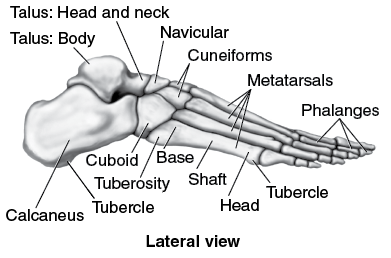
Figure 12.4 With a heel strike, impact force is transmitted quickly through the calcaneus and talus into the tibia.
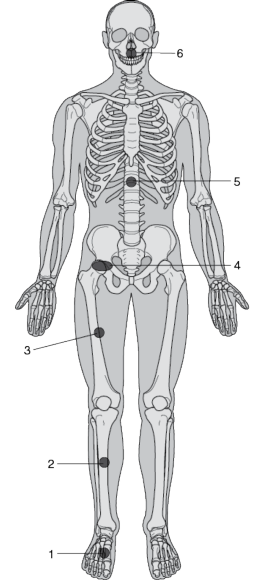
Figure 12.5 With heel-striking, the impact transient is magnified and impact forces travel quickly up the skeletal chain to the head.
Learn more about Running Form.
More Excerpts From Running FormSHOP

Get the latest insights with regular newsletters, plus periodic product information and special insider offers.
JOIN NOW



